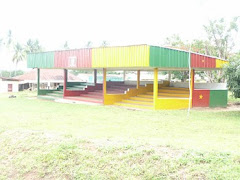 Bassa Dam - Mozambique
Bassa Dam - MozambiqueAchievements
The liberalisation of the electricity sector followed by the privatisation of the then National Electricity Corporation (SONEL), giving out 56 per cent of its shares to AES SONEL, a component of the United States' group in July, 2000, remains one, if not, the major reform taken by the New Deal regime to foster energy production in the country.
The persistent shortage of energy accompanied by constant cuts and seasonal load shedding has not left the powers indifferent. This is explained by the building up of a national electricity development programme which consists mainly of the construction of giant hydroelectric projects. These include the Memve'ele Hydroelectric Dam to be built on the river Ntem in the South region and the Lom Panga water reserve in the East region. Other minor hydroelectric projects have equally been earmarked such as the Natchtigal dam to reinforce energy supply to the Aluminium Smelting company (ALUCAM) in Edea.
Another milestone covered in the drive to step up energy production was the creation in November, 2006 of the Electricity Development Corporation (EDC). The mission assigned to this structure is as follows: management on behalf of the state of public assets in the electricity sector; studying, preparing or executing of any infrastructure project in the electricity sector that is entrusted by the State; and participation in the promotion and development of public and private investment in the electricity sector.
Challenges
Due to certain factors, the measures so far taken may not have produced expected results notably satisfying increasing demand from industries and the population. According to AES-SONEL, total energy production in Cameroon today, stands at 971 Megawatts against an estimated demand of over 1,500 megawatts. The major challenge in the electricity sector is to put to maximum the exploration and exploitation of the country's energy potentials. Already, some electricity projects abound in the likes of Lom Pangar and Memve'ele. As the Head of State said in his speech to the Council of Ministers last April, there has been a lot of laxity in the execution of the said projects. Experts blame the delay on lack of financing. The seven-billion cubic metre-Lom Pangar dam project is estimated at CFA 140 billion while the Memve'ele hydroelectric dam will cost CFA 365 billion.
The Way Out
Menchum Falls - Bamenda

The cabinet meeting of July 09, 2009 that followed the Council of Ministers' Meeting set records straight. The Prime Minister defined the channel to follow in order to increase energy supply in the country. That channel has to do with using thermal and natural gas resources, pending the completion of on-going hydro-power projects. Authorities of the Ministry of Energy and Water Resources and AES-SONEL have earmarked a strategy to boost production pending 2011 when some of the Kribi gas Fired Plant and the Lom-Panga projects are expected to go operational. The strategy has to do with rehabilitating energy supply plants and stations to enable them attain their normal production capacities. These include: the Edea and Songloulou electricity supply stations which could lead to additional 43 Megawatts, the Bafoussam power station (13MW) and the Bertoua power station (between 11 and 12 MW).



























